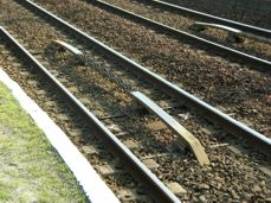

After gathering the information, I made a scale drawing, using my code 83 rails as a template. To reduce the damage risk while cleaning rails, I decided to construct them a bit lower than in reality, so they wouldn't by higher then the rails.
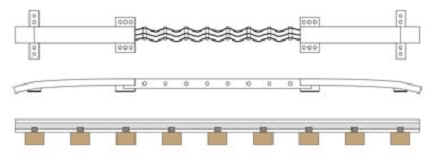 |
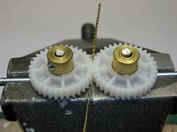 |
The most difficult part of the crocodiles is the 'waggling strips' in the center
part. After some trying, I used two gears, firmly mounted round a steel rod.
Between these gears, a 1,5 mm wide strip of sheet brass is rolled to shape.
From these wobble-shaped strips, I cut three pieces and drilled through them
using a 0.5 mm drill. Some small pieces of brass wire are then put through these
holes.
From a 1x2,5 mm brass U-shaped profile, a 20mm long piece is cut and bent to
shape. Another 3 mm wide strip of sheet is folded to a 8mm V-shape. These parts
are soldered together. This isn't easy to do, but once done, the hard part of
construction is over.
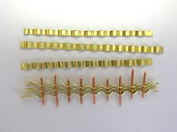 |
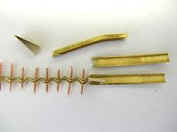 |
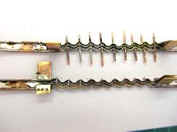 |
Using soldering paste, the 'waggling strips' are soldered to their connecting rods. These rods are clipped short. From the V-shape, foot supports are bent and some mounting holes are drilled through them. On the edges, a 1,5mm wide U-shaped piece of sheet brass is soldered in place and bent, mounting holes are drilled. Finally, the supports are cut to shape.
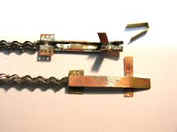 |
|
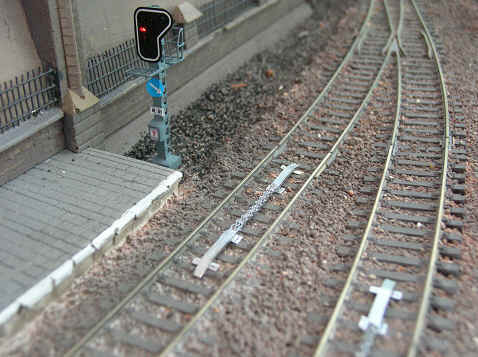
| ©2005 Gerolf Peeters - updated 01.10.2008 | See: Semaphores - Turnouts |